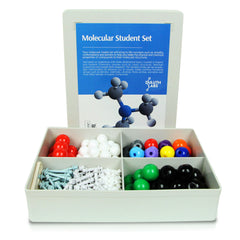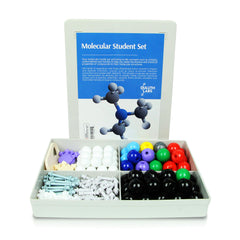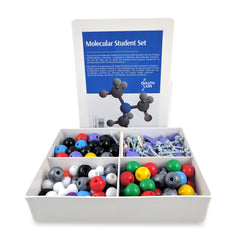Aspirin: Your Heart’s Best friend
Aspirin, very much like salicylic acid, only that it contains an acetyl (or ester group) instead of a hydroxyl group, hence, its other name, acetylsalicylic acid (ASA). It is commonly used for pain, inflammation (swelling) and fever. Moreover, it is also useful in preventing blood clot formation in patients with stroke, as well as heart attacks in high-risk hypertensive patients. Due to its blood thinning properties, it is not advised to be given as a pain reliever in patients with hemorrhage and dengue fever, as it may worsen such effects. It should be also given with caution in children and teenagers as it can cause serious liver and brain damage. Other than those precautions, aspirin is a great friend to the heart!
What does Aspirin look like in Chemistry?


Let’s Get Building!
Using your Student Molecular Set from Duluth Labs let’s create Aspirin! You’ll need:
-
9 Carbon Atoms
-
4 Oxygen atoms
-
8 Hydrogen atoms
-
8 Small connectors (compact small bonds for hydrogen)
-
8 Medium Connectors
-
10 Long connectors
-
Molecular Tool (for Disassembly)
Put aside all the atoms and connectors needed.
Let’s Start Building With Our Benzene Portion !

Note: Let’s begin with Carbon 6! We start building this portion of the molecule in a clockwise direction.
Let’s start!
Steps:
-
1

1.Get one carbon atom (Carbon 6) then attach another carbon atom (Carbon 1) to it using 2 long connectors. Add a hydrogen atom on carbon 6 using a small connector.
-
2

2.Attach another carbon (Carbon 2) below Carbon 1 using a medium connector.
-
3

3.Then, get another carbon (Carbon 3) and attach this to Carbon 2 using 2 long connectors. Add a hydrogen atom to Carbon 3 using a small connector.
-
4

4.Add another carbon atom (Carbon 4) then attach this to Carbon 3 using a medium connector. Place a hydrogen atom on carbon 4 using a small connector.
-
5

5.Get another carbon atom (Carbon 5) then attach this to Carbon 4 using 2 long connectors. Add one hydrogen atom to carbon 5 using a small connector.
-
6

6.Join Carbon 5 and Carbon 6 together using a medium connector.
-

Yay! We've just built our Benzene Portion!
Note: Let’s now add the carboxylic acid functional group to our benzene ring, starting with the carbonyl carbon.

Steps:
-
1

1.Get one Carbon atom (Carbonyl Carbon) then attach this to Carbon 1 of the benzene portion using a medium connector. This is now the carbonyl carbon.
-
2

2.Add an Oxygen atom on this carbonyl carbon using 2 long connectors.
-
3

3.Add another oxygen atom on the carbonyl carbon using a medium connector. Then, add a hydrogen atom to this oxygen using a small connector
-
4

Yay! We've just built our Benzoic acid Portion!
Note: Let’s now add the ester functional group to our benzoic acid starting with the carbonyl carbon.

Steps:
-
1

1.Get one Oxygen atom then attach this to Carbon 2 (of the benzene portion) using a medium connector.
-
2

2.Add a carbon atom on this oxygen using 1 medium connector. This is now the carbonyl carbon.
-
3

3.Add another oxygen atom on the carbonyl carbon using 2 long connectors.
-
4

4.Finally, attach another carbon atom on the carbonyl carbon using a medium connector. Then, add 3 hydrogens to this carbon using 3 short connectors.
Great work! Now we have our newly-built Aspirin.
Feel free to show us how your Aspirin molecule turned out!
Comment and share pictures below!
Tune in next week for another Molecule of the week!
See you then xoxo :)



















cialis buy online usa
https://ponlinecialisk.com/ – cialis for sale online
Viagra Uk cobereva buy cialis pills Reedeerb Viagra Cialis For Sale
Muchas gracias. ?Como puedo iniciar sesion?